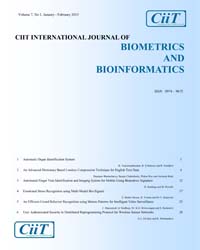User Authenticated Security in Distributed Reprogramming Protocol for Wireless Sensor Networks
Subscribe/Renew Journal
Wireless reprogramming is the process of writing and updating new code or modifying the characteristics of subsisting code for a wireless sensor networks. For security reasons, every code modification must be authenticated to prevent the attacker from installing malicious code in the wireless sensor networks. The existing reprogramming protocol SDRP is based on the distributed reprogramming approach in which one of the security requirement data confidentiality is major issue. In some applications, data are also required to be kept confidential due to the possibility of message interception. The proposed distributed reprogramming protocol supports confidentiality, provides security protection for reprogramming and resistance to the intruder attacks that exploit the distributed reprogramming protocol. The reprogramming protocol uses user level individual authentication for group of cluster to ensure the data confidentiality. In-network data aggregation process applied to summarize the resultant data which enhance the robustness and accuracy of information obtained by entire network. Another advantage is that it reduces the traffic load and conserves energy of the sensors.

Abstract Views: 264

PDF Views: 3



